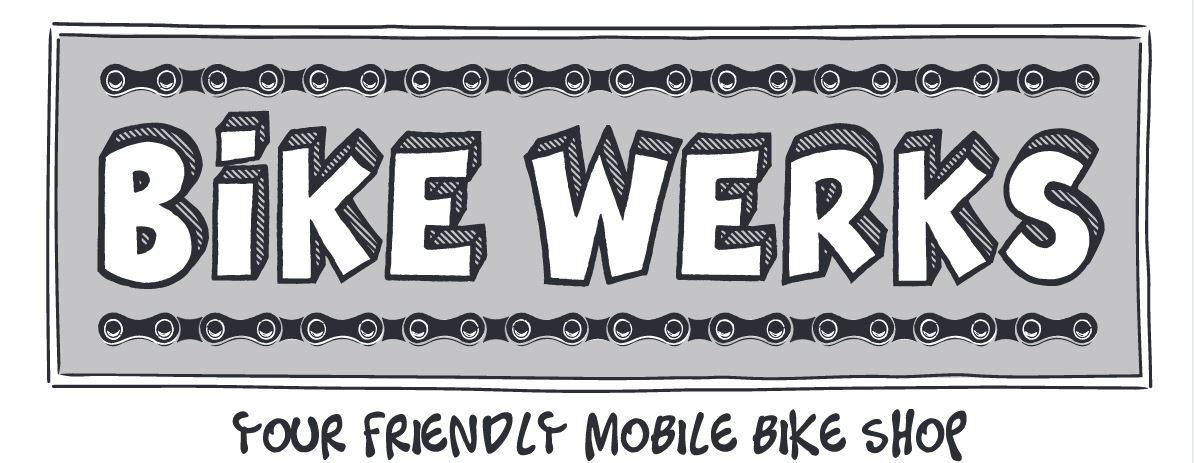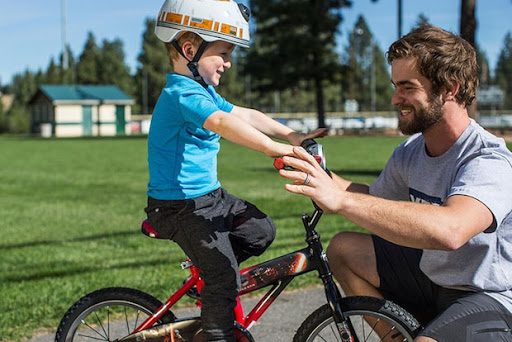Nothing can frustrate new riders quite like bicycle gears. Unfortunately, shifting bike gears isn’t a terribly intuitive thing. It takes a bit of time and thought to learn how to shift properly and efficiently.
The good news is once you get a bit of practice, shifting becomes second-nature–something you don’t have to think about at all. In order to help hasten the learning process, we’ve outlined everything you need to know about shifting–what gears to pick, when to pick them, and how to make a clean shift.

The Parts Of A Drivetrain
First things first. It helps to understand how gears on a bicycle work.
The whole system that propels your bike forward is referred to as your “drivetrain.” This includes your chain, cranks, bottom bracket, derailleur(s), front chainring(s), rear cassette, shifters, and shifter cables.
In this article, we’ll focus on the derailleur(s), front chainrings(s), rear cassette, and shifters.
Unless you have an internally geared hub (not likely, but we’ll discuss it more later), your bike will have a rear derailleur. The rear derailleur moves the chain up and down the rear cassette.

From left to right: A rear cassette and rear derailleur, front chainrings and front derailleur, and a shifter.
The rear cassette is cluster of individual gear cogs (or rings) located on the rear wheel. You may (or may not) also have a front derailleur. If you have more than one chainring up front at the crank, the front derailleur will move the chain between the rings.
Finally, the shifter (or shifters) are located on the handlebar and allow you to manually change gears. When you operate the shifters, they control the movement of the derailleur(s), causing the chain to shift to different gears.
Right Hand Shifting vs. Left Hand Shifting
Many (though not all) bikes will have shifters on both the right and left sides. The left shifter moves the chain on the front rings and the right shifter moves the chain on the rear rings (cassette).
More and more modern bicycles only have a single front chain ring which means there will only be a shifter on the right hand side. This makes things a lot simpler.
But, if you do have both a right and left hand shifter, when should you use which? The left (front) gears should be used to make major gearing changes–for instance, you just made it to a big hill or a big downhill.
For more gradual changes, you want to use the right (rear) gears. You should find that you are spending a lot more time shifting on the right (rear) than you are on the left.
A tip for remembering which shifter to use: right=rear. (This happens to be true for your brake levers too).
Please note, these rules are only true in the United States. If you live elsewhere, your shifters and brakes may very well be reversed.

Understanding Your Shifters
Each brand and type of shifters are a little bit different. Mountain bikes tend to have trigger shifters, road bikes have shifters that are integrated in the brake levers, and some bikes have grip shifters.

With trigger shifters, there are two levers. One moves you to an easier gear, the other moves you to a harder gear.
With drop bar shifters, there are paddles or levers on the inside of the brake lever. If you push them sidewise, you’ll activate the derraileur. One will move you to an easier gear, one to a harder gear.
Grip shifters are a little different. You twist one direction (usually away from you) to go to a harder gear, and the other direction to go to an easier gear.
Some shifters will have a display that show which gear you are in, others don’t have a display. If you don’t have a display–don’t despair–you’ll learn in time how to gauge which gear you’re in.
Spend some time in your driveway or in a parking lot practicing and learning how to operate your particular shifters.
Don’t be afraid–just experiment!
Understanding your Chain Rings and Cassette
In the front of your bike you probably have two or three chain rings. (Some bikes only have one).
The “big chain ring” is the hardest gear to pedal in, and is best reserved for flat roads and downhills. The small ring is best for climbs, and if you have a third, middle ring, this is where you will spend most of your time riding.
In back, you have anywhere from 7 to 12 rings. All the rear rings together are referred to as a cassette.
The rear cassette has the opposite logic of the front chain rings in that the smallest ring is the hardest and the biggest is the easiest. Again, you will spend most of your time somewhere in the middle. You should climb in one of your biggest rings, and descend in one of your smallest.

Shift One Gear at a Time
One mistake beginners tend to makeis overshifting. In the beginning, you should focus on shifting one gear at a time and making sure it is a clean shift before shifting again.
If your chain feels like it is skipping or making a rubbing noise, you probably didn’t make a full, clean shift. Try shifting a little harder into you can feel it shift cleanly into gear.
Don’t Cross-Chain
Another common mistake is what is referred to as “cross-chaining.” This is where you are on the big ring in the front and a big ring in the back (or a small ring in the front and a small ring in the back).
This is a no-no. It puts a lot of torque on the chain, and can cause it to stretch or to fall off your chain rings.
Here’s a bit of a cheat sheet to remember what gears you should be in when:
- Climbing — little ring up front, bigger ring in back
- Descending — big ring up front, littler ring in back
- Flat roads, gentle uphills and downhillls — middle ring up front (if you have one), and any ring in the back that feels comfortable. This is where you should be riding most of the time.
Shift While Moving
Your chain needs to be moving in order for it to shift into a different gear. This means you shouldn’t shift while at a stop or while coasting. Make sure you’re pedaling at least a little bit while you shift.
The only time this isn’t true is if you are riding a bike with an internally geared hub rather than a rear derailleur and cassette. In this case, you actually want to stop pedaling for a moment while you shift.

This bike has gears inside the hub rather than a traditional rear cassette and derailleur.
Think Ahead
Make it a habit to keep any eye on what is in front of you, and don’t wait until the last minute to make a shift. If you see a big hill coming, shift into an easier gear at the bottom before you start climbing in earnest. If there is too much torque on the chain already, you are likely to mis-shift or drop your chain.
Practice, Practice, Practice
Take your bike to the backyard or parking lot or for a few spins around the block. It’s often easiest to practice when you are all by yourself and allow yourself some time and space to make mistakes and learn. Don’t wait until you are on a group ride or riding with friends to practice your shifting, as you are more likely to get flustered and frustrated when riding with other people.
It’s also important to remember that with practice you WILL figure it out. Shifting WILL become easy and feel like second nature. If it feels hard, that’s okay. Give yourself time and patience to figure things out.
(article written by https://www.femmecyclist.com/bicycle-gears-101/ and copied to Bike Werks Blog 7/16/23)

